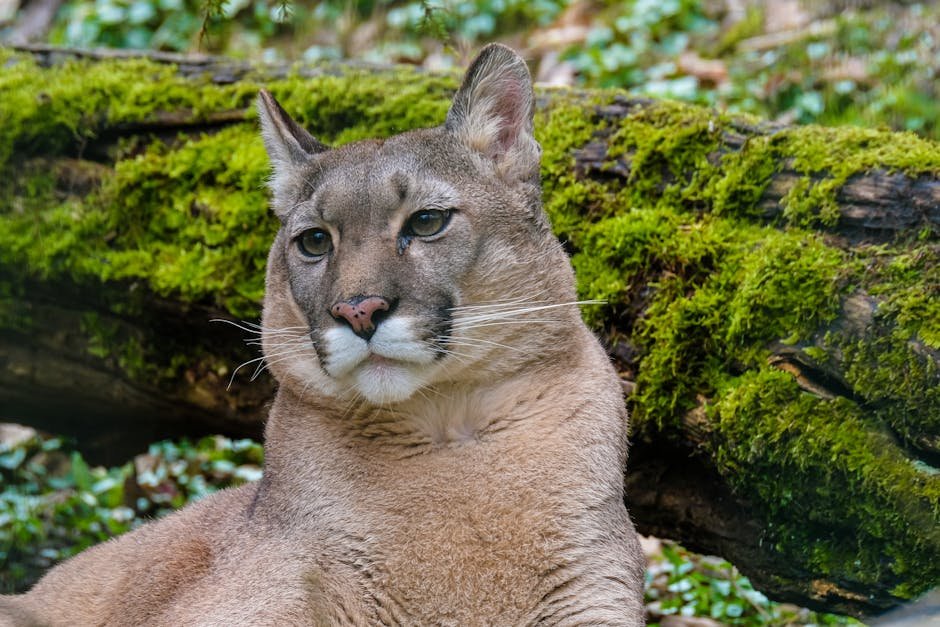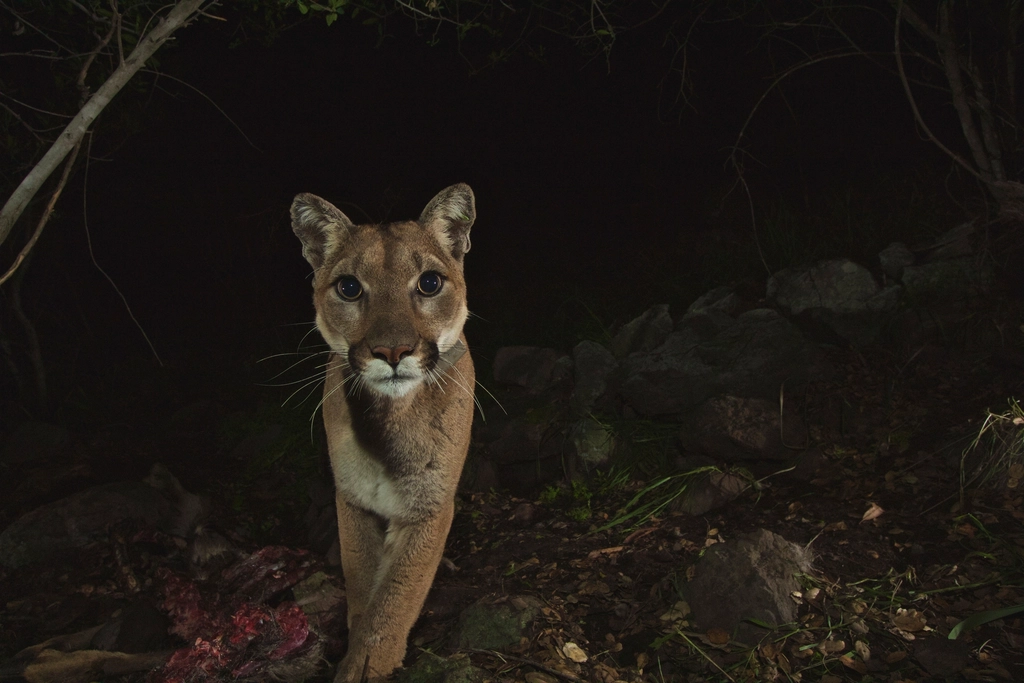The Florida Panther is one of the most elusive and endangered big cats in North America, making it a true symbol of resilience. Once roaming across the southeastern U.S., habitat loss and human activity have drastically reduced their population, leaving only a few hundred in the wild. These sleek, powerful felines play a crucial role in maintaining the balance of their ecosystem, yet their survival remains an uphill battle. Conservation efforts, including habitat protection and wildlife corridors, are key to giving them a fighting chance. With awareness and action, we can help ensure that future generations will continue to witness the beauty of this rare and majestic species.
The Elusive Beauty of the Florida Panther
The Florida Panther, a subspecies of the cougar, is a majestic creature that captures the imagination of many wildlife enthusiasts. With its sleek, tawny coat and piercing eyes, it embodies the wild spirit of the American wilderness. These big cats are elusive by nature, often staying hidden deep within the forests and swamps of Southern Florida. Observing one in its natural habitat is a rare experience, cherished by those lucky enough to encounter it. Their secrecy and limited range make them a symbol of mystery and intrigue among the wild cat community. As development encroaches on their territory, their survival depends on our understanding and appreciation of their beauty and significance.
A Struggle Against Extinction

The Florida Panther is not just a remarkable wild cat; it is also one of the most endangered mammals in the United States. With a population that once dwindled to around 20 individuals in the 1970s, their fight against extinction has been nothing short of a miracle. Conservation efforts have since helped their numbers rebound to approximately 120 to 230 individuals today. However, this is still a fragile recovery, teetering on the brink of survival. Habitat loss, vehicle collisions, and genetic inbreeding are constant threats that continue to challenge their existence. The Florida Panther’s struggle is a poignant reminder of the delicate balance between nature and human expansion.
Habitat: A Home in the Swamps and Forests

The Florida Panther’s habitat is as unique as the animal itself. Preferring the subtropical forests and swamps of Southern Florida, these cats thrive in areas that provide dense cover and abundant prey. They roam through cypress swamps, hardwood hammocks, and pinelands, each offering a distinct set of resources essential for their survival. This varied landscape supports a rich biodiversity, making it an ideal home for these elusive predators. However, as urban development continues to encroach on these habitats, the panthers face increasing challenges in finding enough space and food. Protecting these vital areas is crucial for their continued survival.
The Lone Hunter: Solitary and Territorial

Florida Panthers are solitary creatures, known for their strong territorial instincts. These big cats prefer to roam alone, marking their territory with scent to ward off other panthers. Males typically have larger territories, sometimes covering hundreds of square miles, while females have smaller, overlapping ranges. This solitary nature means that encounters between panthers are rare and usually revolve around mating or territorial disputes. Their solitary lifestyle is a key aspect of their survival strategy, reducing competition for resources and allowing each individual to focus on hunting and raising young. Understanding these behaviors is crucial for conservation efforts aimed at protecting their natural territories.
Diet: An Apex Predator’s Menu

As apex predators, Florida Panthers play a critical role in maintaining the balance of their ecosystem. Their diet primarily consists of white-tailed deer, wild hogs, and raccoons, but they are opportunistic hunters and will eat smaller animals like rabbits and birds if necessary. This varied diet helps control the populations of their prey, preventing overpopulation and keeping the ecosystem in balance. However, as human development reduces their hunting grounds, they may turn to livestock and pets, leading to conflicts with humans. Ensuring that these predators have access to natural prey is essential for minimizing human-wildlife conflicts and maintaining ecological balance.
Reproduction: Raising the Next Generation

The reproduction cycle of the Florida Panther is a delicate process that significantly influences their population dynamics. Female panthers give birth to litters of one to four kittens, usually every two to three years. The kittens are born blind and rely heavily on their mother for the first few months of life. As they grow, the mother teaches them essential survival skills, such as hunting and territory navigation. After about 18 months, the young panthers disperse to find their own territories. The survival of these kittens is vital for the species’ future, making conservation efforts that protect breeding females and their habitats critically important.
Genetic Diversity: The Importance of a Healthy Gene Pool

One of the most significant challenges facing the Florida Panther is maintaining genetic diversity. With such a small population, inbreeding becomes a serious concern, leading to health issues and reduced resilience to environmental changes. To address this, conservationists have introduced Texas cougars into the population to increase genetic diversity and strengthen the gene pool. This strategy has shown positive results, with healthier and more resilient offspring emerging from these cross-breeding efforts. Protecting genetic diversity is essential for the long-term survival of the Florida Panther, ensuring they have the adaptability needed to thrive in a changing world.
Human Impact: A Double-Edged Sword

Human activities have both positive and negative impacts on the Florida Panther. On one hand, urbanization and road networks fragment their habitats, increasing the risk of vehicle collisions—the leading cause of death for these animals. On the other hand, human intervention through conservation programs has played a pivotal role in their recovery. Efforts such as habitat restoration, wildlife crossings, and public awareness campaigns are essential in mitigating the negative impacts of human activity. The future of the Florida Panther depends on finding a balance between development and conservation, allowing humans and wildlife to coexist harmoniously.
Conservation Successes and Challenges

The story of the Florida Panther is one of both success and ongoing challenges. Conservation efforts have brought the species back from the brink of extinction, demonstrating the power of dedicated research and action. However, the challenges are far from over. Continued habitat preservation, road safety measures, and public education are needed to ensure the panther’s survival. Collaboration between government agencies, conservation organizations, and local communities is crucial in addressing these challenges. The Florida Panther’s journey is a testament to the resilience of nature and the impact humans can have when they choose to protect it.
The Symbol of Florida’s Wild Heritage

The Florida Panther is more than just an animal; it is a symbol of the state’s wild heritage. As the official state animal, it represents the unique and diverse ecosystems of Florida. Its survival is intertwined with the health of the state’s natural landscapes, making it a focal point for conservation efforts. The panther’s story is a reminder of the importance of preserving the natural world for future generations. By protecting the Florida Panther, we are also safeguarding the rich biodiversity and natural beauty that define the Sunshine State.
The Florida Panther is more than just a rare and beautiful big cat—it’s a symbol of resilience in the face of adversity. With conservation efforts and greater awareness, we can help protect this incredible species and ensure its survival for future generations. Every step toward preserving their habitat brings us closer to securing a future where these majestic felines continue to roam Florida’s wilderness.
Jen is a passionate nature lover and ocean conservationist. She has dedicated her life to protecting the environment and preserving the beauty of the natural world. Growing up in a small coastal town, Jen sincerely appreciated the ocean and its inhabitants. She has spent countless hours exploring the shoreline, learning about the creatures that inhabit the waters, and advocating for their protection. Jen is an active member of ocean conservation organizations, and she is committed to educating the public about the importance of conserving wildlife and the natural environment.






